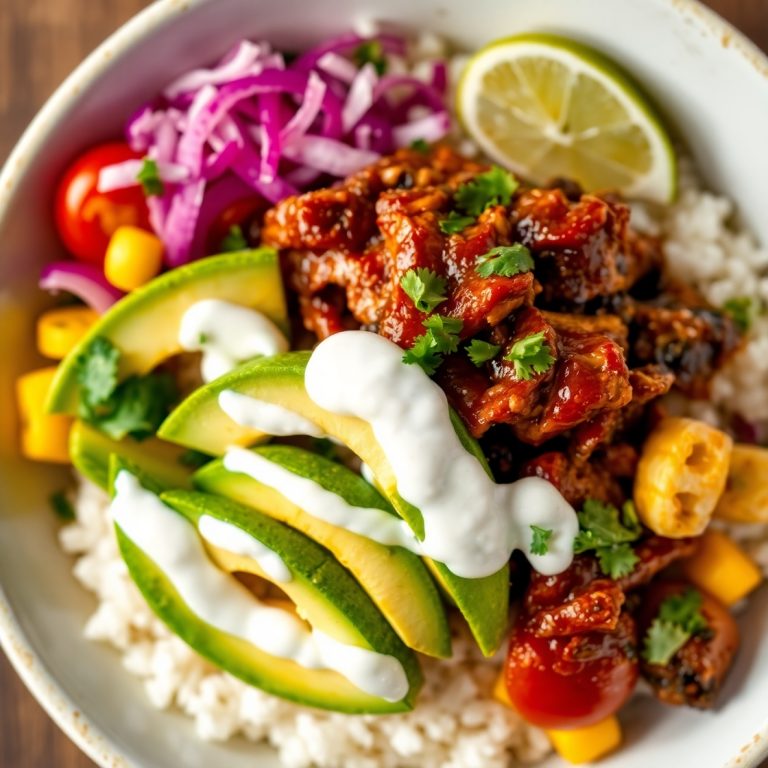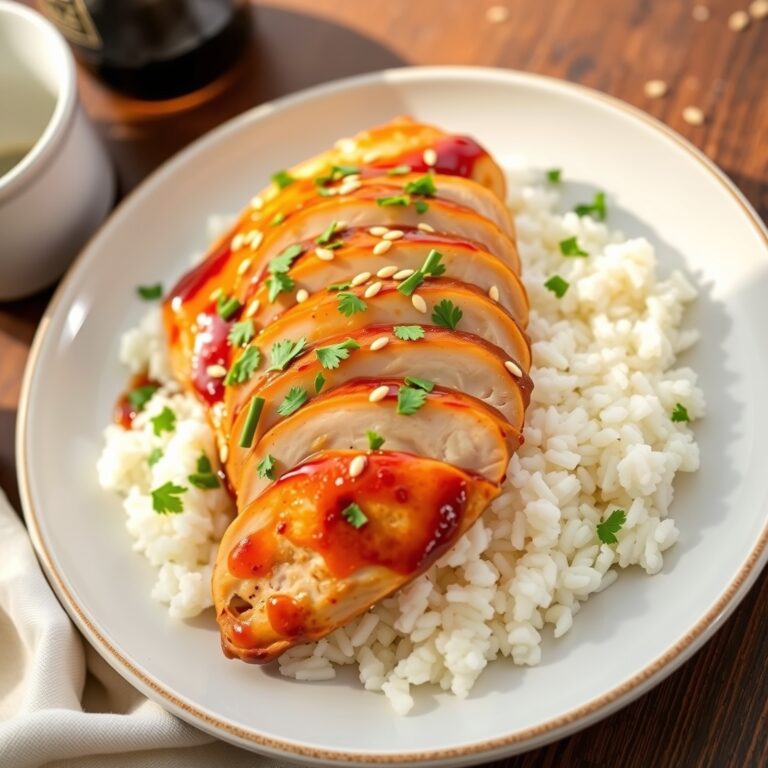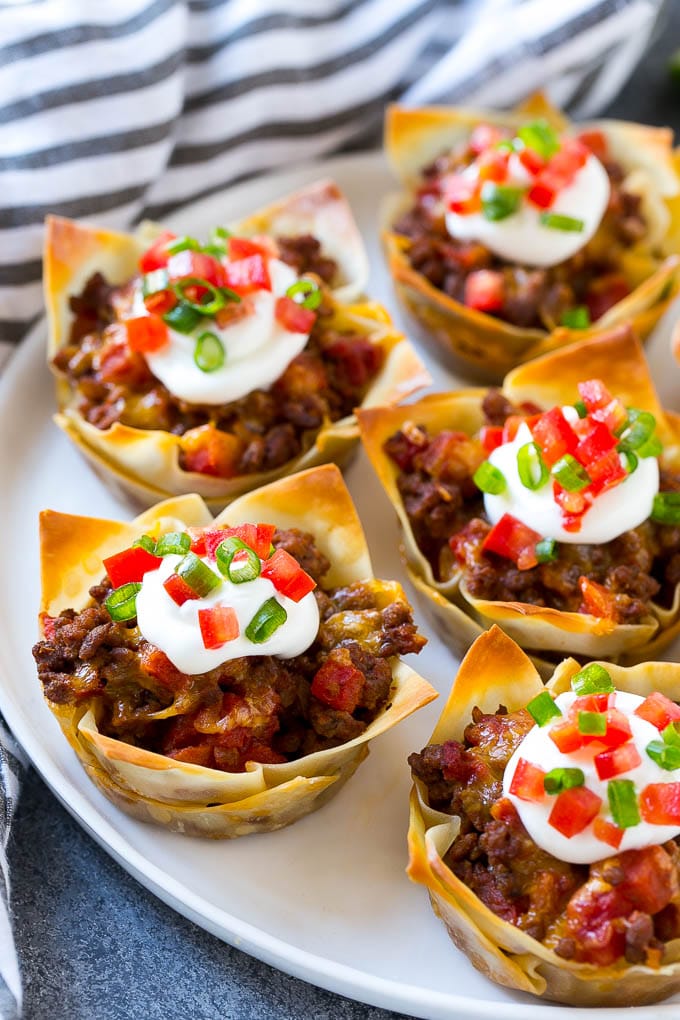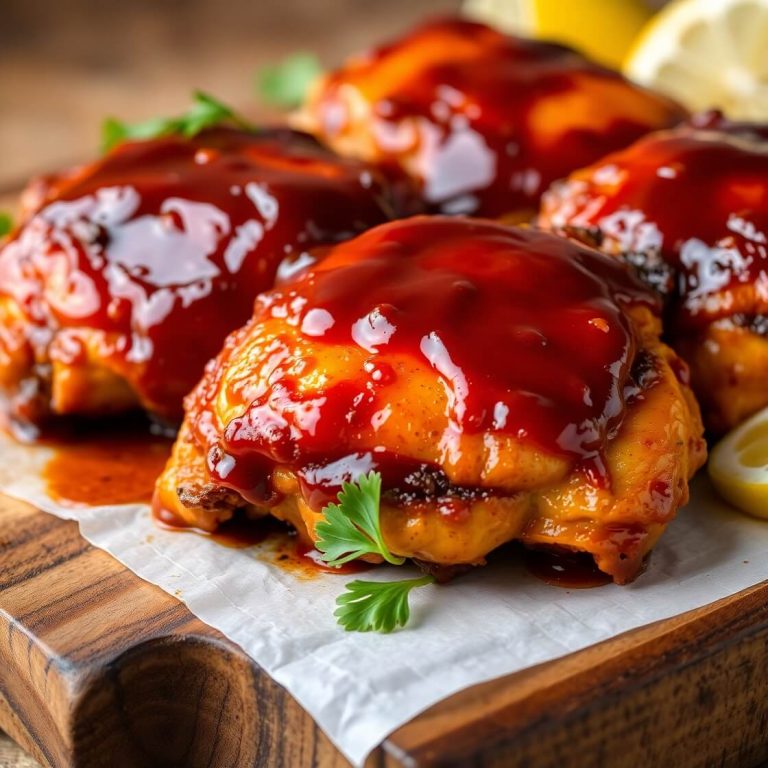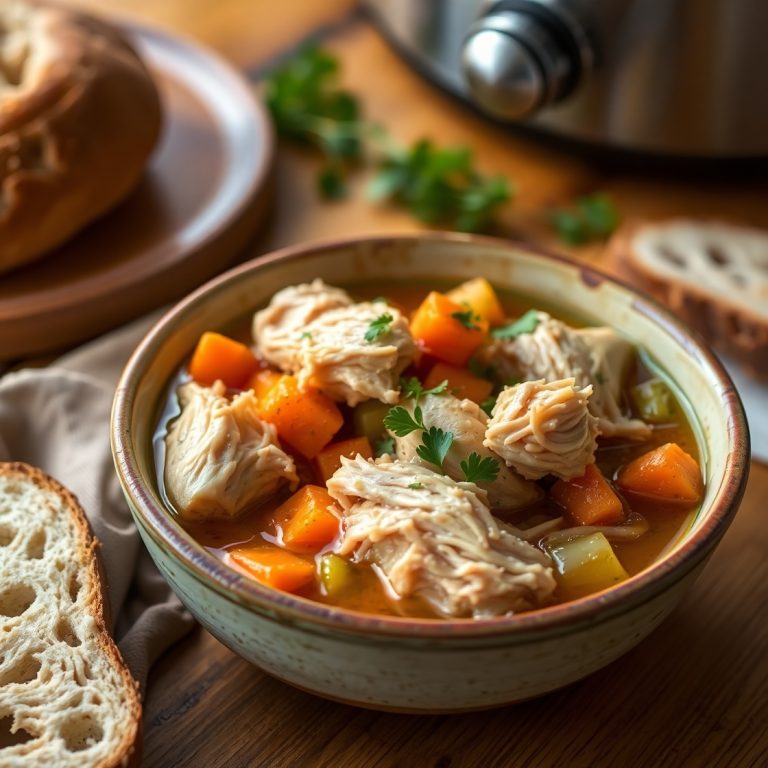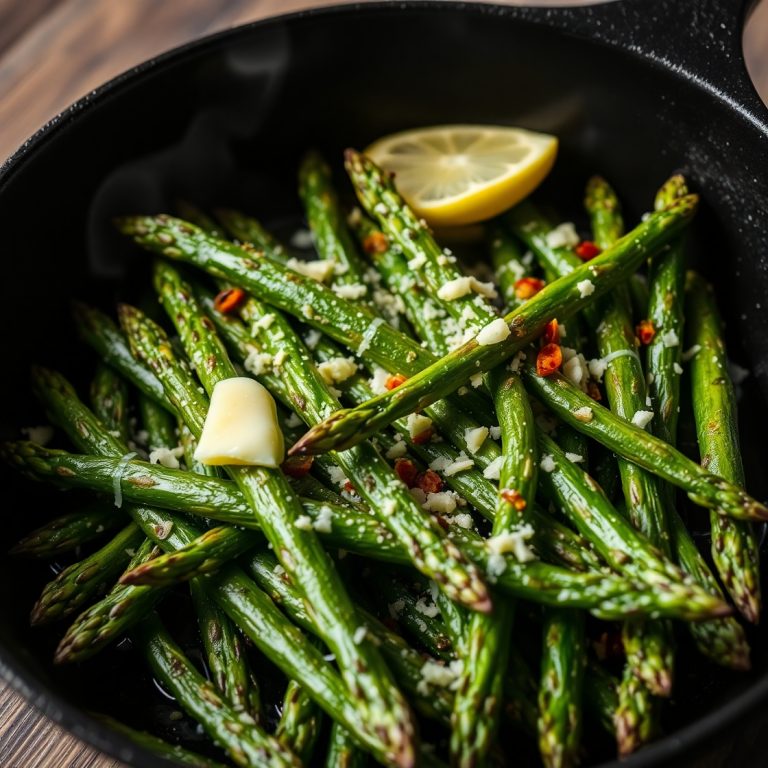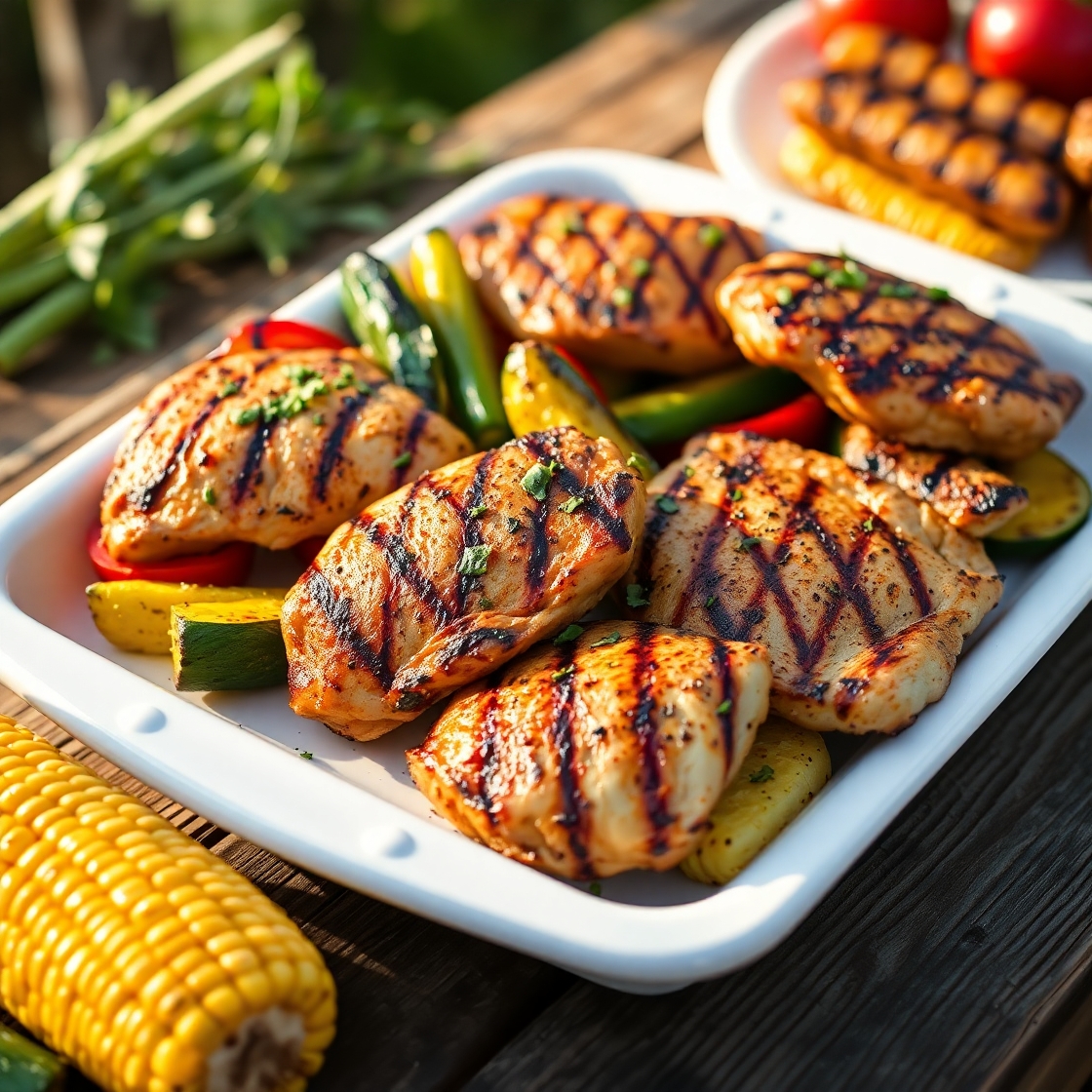
There’s something undeniably special about grilling dinner. Whether it’s the sizzle of meat or vegetables hitting the grill, the aromatic smoke filling the air, or the joy of gathering with loved ones around a crackling fire, grilling holds a special place in our culinary hearts. This simple yet incredibly satisfying way of cooking brings out natural flavors that cannot be replicated in a kitchen.
But why do we turn to grilling when we’re deciding what’s for dinner? It’s the perfect solution for those busy weeknights or relaxed weekends, offering a quick, flavorful meal with minimal cleanup. It’s also versatile—grilled chicken, beef, seafood, vegetables, and even fruits can be prepared on the grill, creating endless possibilities for dinner. Grilling can be an art, and with the right techniques and ideas, your grilled meals can become the highlight of any gathering.
Let’s explore a few grilling ideas that will elevate your dinner, whether you’re a beginner or an experienced griller. From marinades to side dishes, we’ll walk through all the details to make sure your next grilled dinner is perfect.
Why I Love This Recipe?
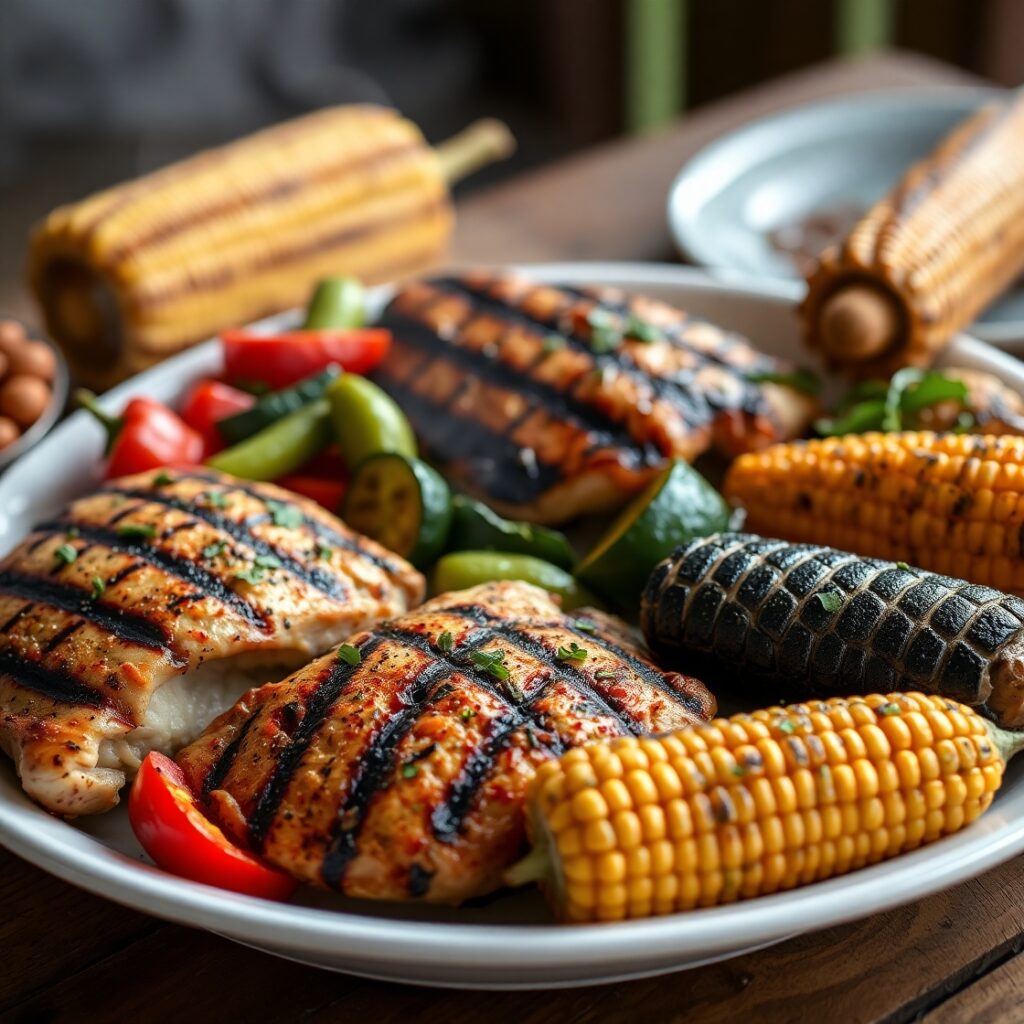
Grilling is much more than just cooking food over an open flame; it’s about unlocking the inherent flavors of your ingredients, enhancing them with smokiness, and giving them that crispy, charred exterior. But the real magic comes in the ability to customize the flavors according to your preferences.
One of the key reasons why people love grilling is the depth of flavor that the grill imparts to food. The heat causes caramelization of sugars, creating a rich, smoky flavor that can’t be replicated by other cooking methods. Whether it’s the seared crust of a steak or the sweet, tangy finish on grilled vegetables, grilling brings out the best in your ingredients.
Moreover, grilling is a perfect excuse to cook outdoors and enjoy the company of family or friends. It allows you to get creative with different marinades, rubs, and seasonings, making each grilling experience a new adventure. And let’s not forget the feeling of satisfaction when you pull a perfectly cooked dish off the grill.
Grilled meals are also naturally healthier, as excess fats drip away during the cooking process. The versatility is unmatched, as you can prepare everything from meats to plant-based options like tofu or mushrooms. It’s a method that works for everyone—whether you’re craving a juicy steak or a flavorful grilled veggie platter.
Ingredients for Grilling Ideas
When it comes to grilling, the key ingredients you need will depend on what you’re cooking. However, there are some basic components that are common to many grilling recipes:
Proteins:
- Chicken: Boneless, skinless breasts, thighs, or wings work well. Chicken is incredibly versatile and can be seasoned with a wide range of marinades.
- Beef: Steaks like ribeye, sirloin, or filet mignon are perfect for grilling, but you can also opt for ground beef to make burgers.
- Pork: Pork chops or tenderloin are popular choices for grilling. They have a slight sweetness and respond well to marinades.
- Seafood: Fish fillets, shrimp, and even scallops can be grilled to perfection. They require less cooking time than meats, but the flavor is unmatched.
Vegetables:
- Bell Peppers: These are great grilled, offering a smoky, sweet flavor.
- Zucchini and Squash: Slice these into thick strips for grilling. They take on a wonderful char.
- Corn on the Cob: Grilled corn is a summer classic. It’s sweet and smoky, perfect with a little butter and seasoning.
- Mushrooms: Large portobello mushrooms are an excellent meat substitute when grilled, offering a juicy texture and earthy flavor.
- Onions: Grilled onions add a wonderful sweetness and depth to your meal.
Marinades and Seasonings:
- Olive Oil: A staple for grilling, it helps to coat meats and vegetables and keep them from sticking.
- Garlic: A versatile flavoring agent that can infuse your meats, seafood, or vegetables with depth.
- Herbs and Spices: Rosemary, thyme, paprika, cumin, and chili powder all work well with grilled food.
- Soy Sauce and Vinegar: These provide an acidic element to your marinades, which helps tenderize meats and adds flavor.
Grilling Tools:
- Grill: Whether it’s a charcoal grill, gas grill, or electric grill, it’s essential for cooking your food.
- Tongs and a Spatula: These are necessary to handle your ingredients on the grill.
- Grill Brush: Keeping your grill clean ensures your food won’t stick, and it also prevents flare-ups.
- Grill Pan (for vegetables): If you prefer a more controlled cooking method for delicate vegetables, a grill pan is your best friend.
How Much Time Will You Need?
The time needed to prepare and cook your grilled dinner will vary depending on the ingredients you choose and the complexity of your recipe. Generally, grilling is a relatively quick cooking method.
- Prep Time: 15-30 minutes (depending on marination time)
- Grilling Time: 10-30 minutes (depending on the type of food)
For instance, grilled chicken breasts can cook in about 10-12 minutes, while thicker cuts like pork chops may take 20-30 minutes. Vegetables like bell peppers or zucchini will grill in about 5-10 minutes, while corn on the cob might take closer to 15 minutes.
Marinating your proteins or vegetables ahead of time can add an extra 30 minutes to a couple of hours to the total preparation, but the results are worth the wait.
How to Make Grilling Ideas for Dinner
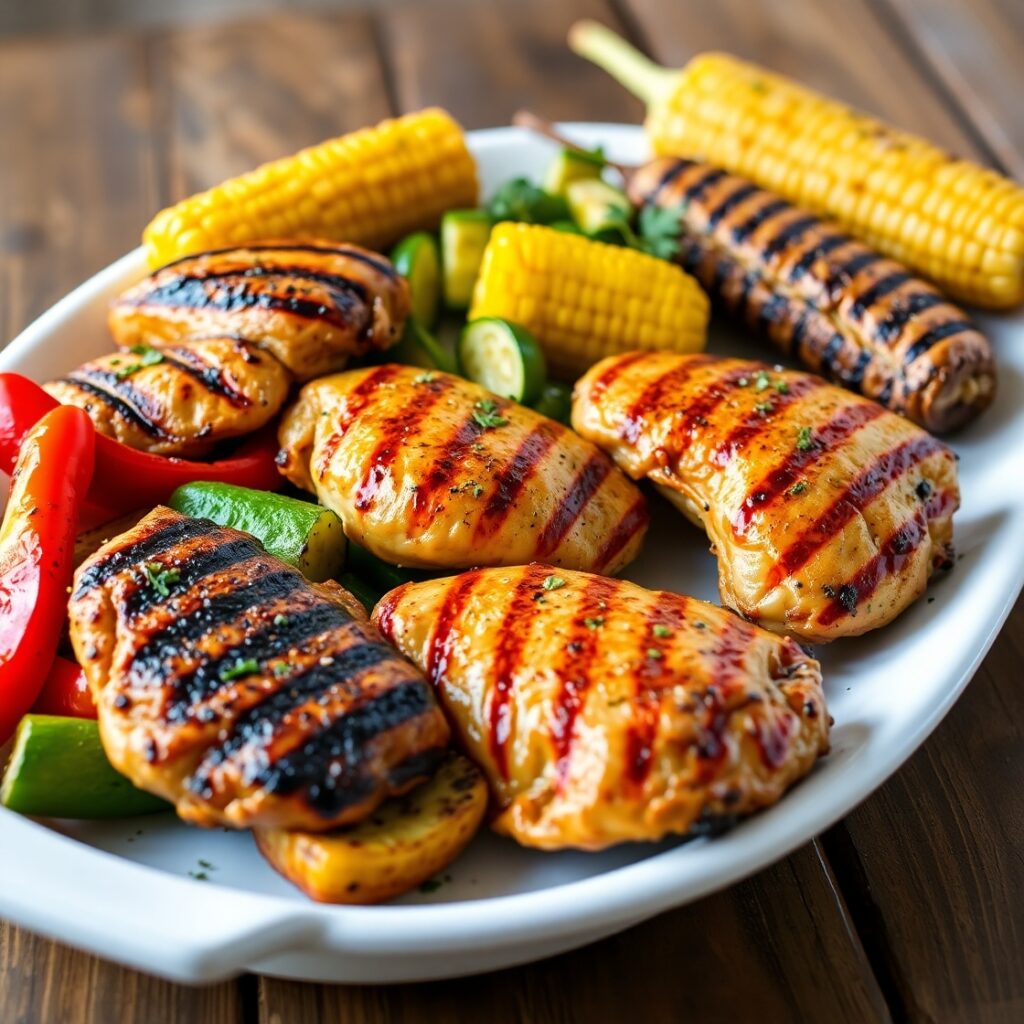
Step – 1: Prepare Your Ingredients
The first step to a successful grilling session is to prepare your ingredients. This includes marinating your proteins and cutting your vegetables into appropriate sizes. For example, chicken breasts can be pounded to an even thickness for uniform cooking, while vegetables should be cut into thick slices or chunks so they hold up well on the grill.
Step – 2: Preheat the Grill
Before you start cooking, make sure your grill is hot and ready. Whether you’re using charcoal or gas, preheat the grill to a medium-high temperature. You should be able to hold your hand a few inches above the grill for only 2-3 seconds if it’s properly heated.
Step – 3: Oil the Grill Grates
To prevent sticking, use a paper towel or cloth dipped in oil to wipe the grill grates. You can use tongs to hold the cloth, making sure not to burn yourself.
Step – 4: Grill Your Proteins and Vegetables
Place your proteins and vegetables on the grill, turning them periodically to ensure even cooking. For meats, use a meat thermometer to check for doneness (for instance, chicken should reach 165°F internal temperature). Vegetables can be turned when grill marks appear, and they should be tender but still crisp.
Step – 5: Let the Food Rest
Once your food is done, remove it from the grill and let it rest for a few minutes. This allows the juices to redistribute, ensuring that your meats stay moist and flavorful.
Substitutions
Grilling is a versatile cooking method, and there are plenty of substitutions you can make based on dietary preferences or what you have on hand:
- Tofu or Tempeh for Protein: If you’re looking for a plant-based substitute, tofu or tempeh makes an excellent grilling option. Marinate them in your favorite sauce and grill until crispy on the outside.
- Sweet Potatoes for Vegetables: If you prefer a sweeter side, try grilling slices of sweet potato for a caramelized finish.
- Lettuce Wraps Instead of Buns: For a low-carb alternative, wrap your grilled protein in large lettuce leaves instead of using traditional buns.
Best Side Dishes for Grilling Ideas
Grilled food is best paired with sides that complement the smokiness and bring freshness and crunch to the meal.
- Grilled Corn on the Cob: A perfect side that pairs well with any grilled main dish, sweet and smoky with a little butter and seasoning.
- Coleslaw: A tangy, crunchy slaw adds a refreshing contrast to the richness of grilled meats.
- Grilled Asparagus: A simple, elegant side dish that enhances the grilled flavors with its own smoky bite.
Serving and Presentation Tips
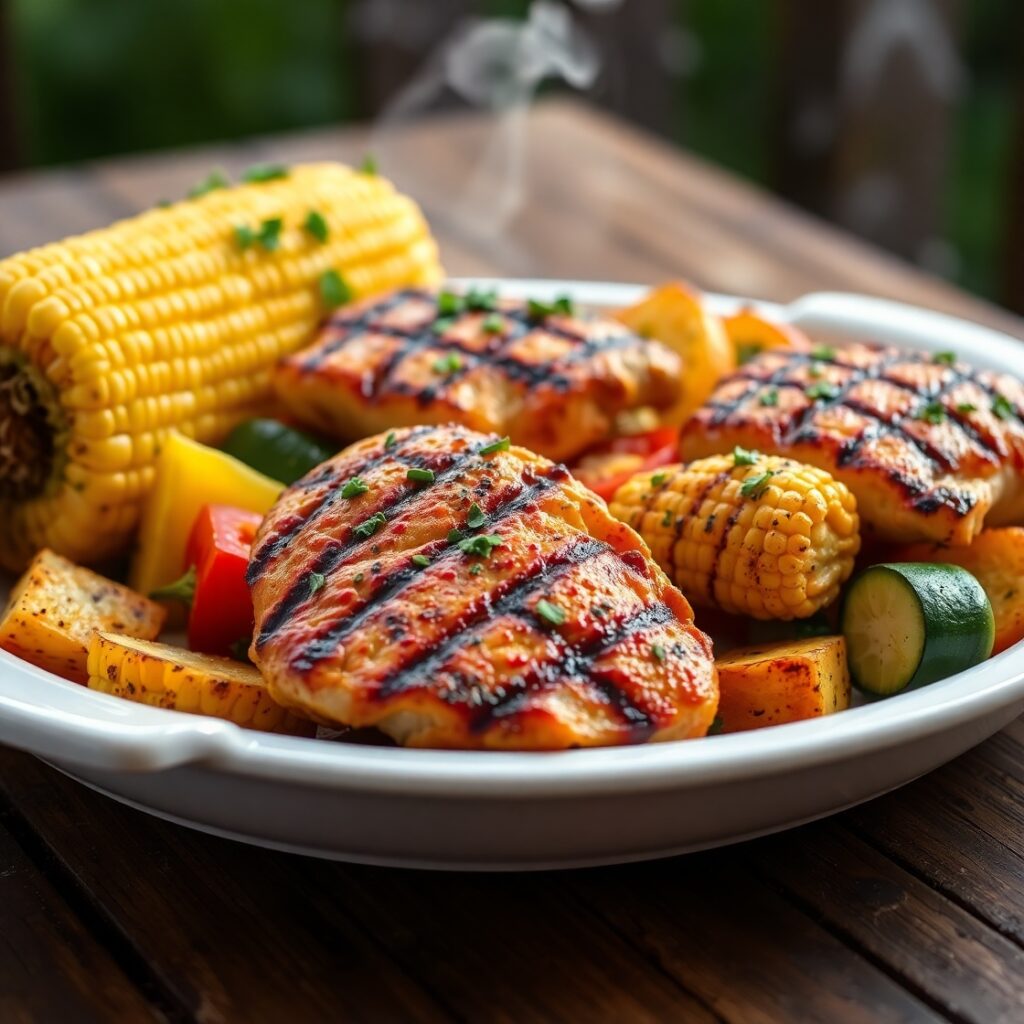
When it comes to grilling, the way you serve your meal can elevate the entire dining experience. Presentation matters, especially when you’ve put so much effort into grilling the perfect meal. Here are some tips to make your grilled dinner even more impressive:
- Use a Clean, Elegant Platter: Serving your grilled food on a large, clean platter not only makes it look appetizing but also makes it easier for guests to help themselves. Choose a neutral-colored platter, like white or beige, to let the vibrant colors of your grilled food pop.
- Garnish with Fresh Herbs: A sprig of rosemary, thyme, or parsley can make your grilled proteins look more elegant. It adds a pop of green that contrasts beautifully with the charred and golden tones of the grilled food.
- Serve with Dips and Sauces: Offering a variety of dips and sauces on the side can give your meal a gourmet touch. For grilled chicken, consider serving with a tangy barbecue sauce, while grilled vegetables can be complemented by a garlic aioli or yogurt-based dip.
- Keep the Plates Warm: Warm plates help keep your grilled food at the perfect temperature while serving. If possible, heat the plates in the oven for a few minutes before plating the food.
- Serve on a Bed of Greens: For an extra touch of sophistication, serve grilled proteins on a bed of fresh greens. Arugula or mixed greens add color and freshness, balancing out the rich flavors of grilled food.
Tips and Tricks to Make This Recipe Better
Grilling is all about technique and using the right methods to achieve the best results. Here are some expert tips and tricks to take your grilling game to the next level:
- Preheat Your Grill Properly: This may seem like an obvious tip, but it’s crucial. A properly preheated grill creates that beautiful sear on your proteins and vegetables, locking in moisture and flavor.
- Don’t Overcrowd the Grill: Grilling should be about giving each piece of food enough space. Overcrowding prevents the food from cooking evenly and can result in steaming rather than grilling. Arrange your ingredients in a single layer with space between them.
- Use a Thermometer: It’s easy to overcook or undercook your meat without a thermometer. A quick check with an instant-read thermometer can ensure your chicken is at 165°F or your steak is cooked to your desired doneness.
- Let the Meat Rest: After grilling, let your meat rest for 5-10 minutes. This resting period allows the juices to redistribute throughout the protein, keeping it moist and flavorful.
- Experiment with Rubs and Marinades: Don’t be afraid to experiment with different spice rubs, marinades, and glazes. A simple marinade can completely change the flavor profile of grilled food, so get creative with your ingredients and seasonings.
Common Mistakes to Avoid
Grilling can be a straightforward method of cooking, but there are some common mistakes that can ruin your meal. Here are the key ones to avoid:
- Not Preheating the Grill: If you don’t preheat your grill properly, your food will stick to the grates, and it won’t cook evenly. Always make sure the grill is hot before placing your food on it.
- Flipping Meat Too Often: Over-flipping meat can prevent it from developing a nice crust and lead to uneven cooking. Flip the meat once and let it cook undisturbed on each side.
- Using Wet Marinades Right Before Grilling: If your meat or vegetables are too wet from marinades, they can steam rather than grill, preventing the desirable sear. Pat your ingredients dry with a paper towel before grilling to avoid this.
- Grilling Over Direct Heat for Too Long: High heat can create a great sear, but if you’re grilling something thick (like a pork chop or chicken breast), make sure to move it to indirect heat to finish cooking without burning the outside.
- Not Using a Meat Thermometer: Guessing whether your meat is cooked to perfection is a mistake. Always use a thermometer to ensure accuracy, especially with thicker cuts of meat.
How to Store It
Grilled meals, when stored properly, can last for several days and make for great leftovers. Here’s how to store your grilled food:
- Cool Down Before Storing: Allow your grilled food to cool to room temperature before storing it. Placing hot food in a container can create condensation, which will make your food soggy.
- Use Airtight Containers: Store your grilled proteins and vegetables in airtight containers to preserve freshness. If possible, separate the meat from the sides to prevent them from absorbing too much moisture.
- Refrigeration: Grilled foods can typically be kept in the refrigerator for 3-4 days. Make sure they are properly sealed to prevent air from getting in.
- Freezing for Longer Storage: If you’ve made a large batch of grilled food and want to store it for a longer period, freezing is an option. Wrap your grilled meats in foil and then place them in freezer-safe bags. They can last for up to 2-3 months in the freezer. Just reheat them in the oven or on the grill.
FAQ
Here are five frequently asked questions related to grilling, along with their answers:
1. Can I use a gas grill instead of a charcoal grill?
Yes, both gas and charcoal grills work well for grilling. Gas grills are easier to control, while charcoal grills give food a distinct smoky flavor. The choice depends on your personal preference.
2. How do I prevent vegetables from sticking to the grill?
To prevent vegetables from sticking, brush them lightly with olive oil before grilling. Additionally, using a grill basket or grill pan can help keep them from falling through the grates.
3. What’s the best way to reheat grilled food?
The best way to reheat grilled food is by using the grill itself. Preheat the grill to medium heat and reheat the food for a few minutes, turning occasionally to avoid drying out the meat.
4. How can I make sure my chicken is cooked through without being dry?
To ensure your chicken is cooked through but still juicy, use a meat thermometer. Chicken should reach an internal temperature of 165°F. Also, marinating the chicken beforehand helps retain moisture during grilling.
5. Can I grill fruits?
Absolutely! Grilling fruits like peaches, pineapples, and watermelons can enhance their sweetness and provide a smoky flavor. Just make sure the fruit is firm enough to hold up on the grill.
Print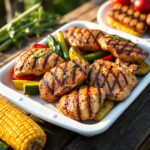
Grilling Ideas for Dinner Recipe
- Total Time: 30–60 minutes
- Yield: 4 servings
- Diet: Gluten Free
Description
Grilling offers a world of possibilities when it comes to preparing dinner. Whether you’re making juicy steaks, tender chicken, or charred vegetables, grilling enhances flavors in ways that other cooking methods can’t. This recipe guide will help you master the art of grilling with tips, tricks, and ideas for creating a memorable meal. Whether you’re a novice or a seasoned griller, there’s something for everyone in this recipe collection.
Ingredients
- 4 chicken breasts (or any preferred protein)
- 2 bell peppers, sliced
- 1 zucchini, sliced
- 2 corn cobs, husked
- 1 tablespoon olive oil
- 2 cloves garlic, minced
- Salt and pepper, to taste
- Fresh herbs (optional)
Instructions
- Preheat the grill to medium-high heat.
- Season proteins and vegetables with olive oil, garlic, salt, and pepper.
- Place the protein and vegetables on the grill. Cook the protein according to your preferred doneness, and grill vegetables until tender with a slight char.
- Let the meat rest for 5-10 minutes before serving.
- Serve grilled protein and veggies on a platter, garnished with fresh herbs.
Notes
Experiment with different marinades or rubs to create new flavor profiles for your grilled meal.
Pair with grilled corn on the cob and a refreshing side salad.
- Prep Time: 15- 30 minutes
- Cook Time: 10-30minutes
- Category: Main Course
- Method: Grilling
- Cuisine: Various
Nutrition
- Serving Size: 1 plate (1 protein + 2 sides)
- Calories: 350

